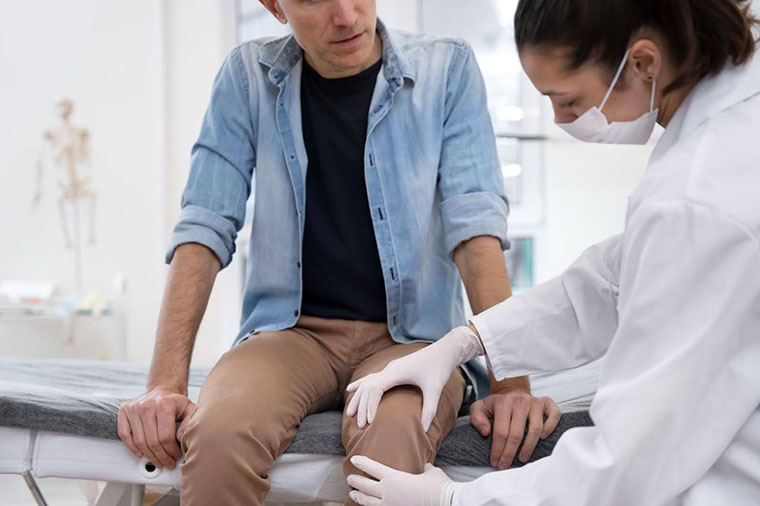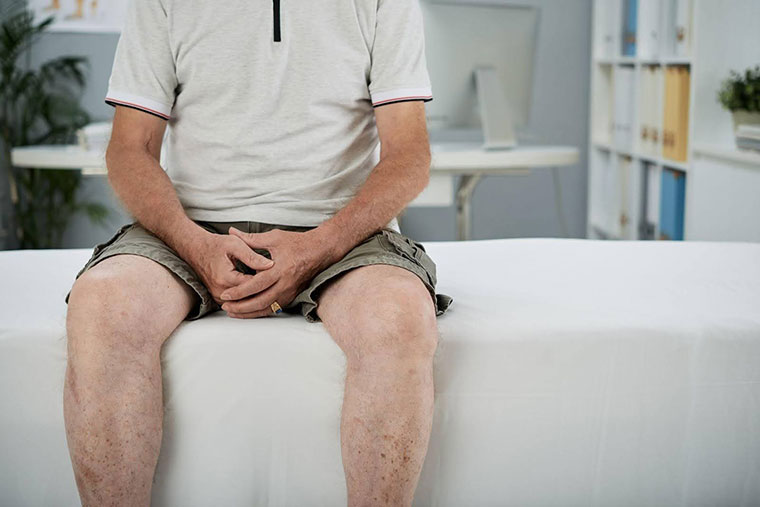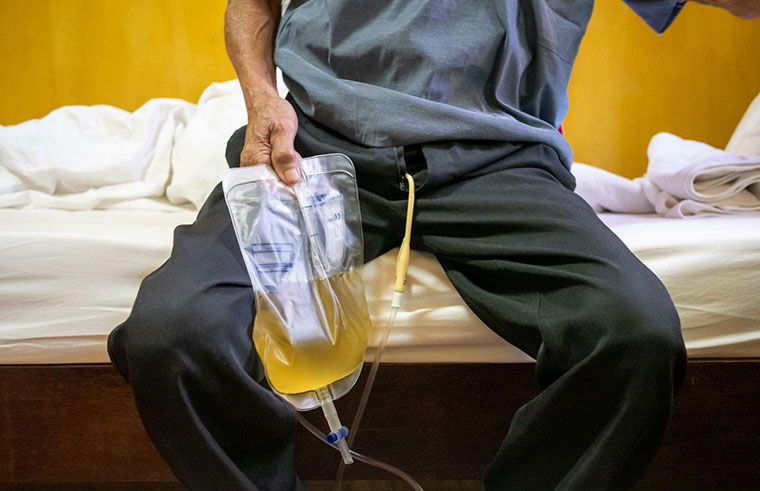Identifying Risk Factors for Urinary Retention and Infections After Hip or Knee Replacement

Hip and knee replacements are among the most common orthopedic surgeries in aging male populations, with over 62,000 procedures performed annually in Canada alone—a number that has more than doubled in the past decade. While these surgeries significantly improve mobility and quality of life, they are not without risk. One frequently overlooked but clinically important complication is postoperative urinary retention (POUR), particularly in male patients. In a large study of over 1,000 patients undergoing elective hip or knee arthroplasty, the 24-hour incidence of POUR reached 43.3%, with male sex increasing the risk nearly fourfold. Factors such as spinal anesthesia and intrathecal morphine further contribute to this elevated risk.
Introduction
POUR can lead to severe complications including urinary tract infections, acute kidney injury, and prosthetic joint infections. With incidence rates ranging widely—from 8.8% with peripheral nerve blocks to over 48% with epidural analgesia—early identification and targeted prevention of POUR is essential to improving surgical outcomes in men.
Understanding Urinary Complications
After hip or knee replacement surgery, some male patients may experience urinary retention, which means they are unable to empty their bladder even when it feels full. This condition, called postoperative urinary retention (POUR), can be very uncomfortable and may cause abdominal pain, bloating, and the constant urge to urinate without being able to. If left untreated, POUR can stretch and damage the bladder muscle, leading to long-term problems with bladder control. It can also trigger more serious complications like acute kidney injury, heart rhythm problems, or confusion (delirium), especially in older men.
To treat POUR, doctors usually insert a thin tube (catheter) to drain the bladder. However, catheter use also comes with risks, the most common being a urinary tract infection (UTI). A UTI happens when bacteria enter the urinary tract, causing pain during urination, frequent urges to go, fever, and cloudy or foul-smelling urine. If not managed quickly, a UTI can spread to the bloodstream or the surgical site, potentially infecting the new joint implant.
Because POUR and UTIs are common in male patients after joint replacement surgery, recognizing symptoms early and choosing the right prevention strategies are key to a smoother and safer recovery.
Why Men Are at Higher Risk
Men face a higher risk of developing urinary complications, particularly after surgeries like total hip or knee replacements. One major reason is benign prostatic hyperplasia (BPH), or prostate enlargement—a common condition in older men. As the prostate grows, it can squeeze the urethra (the tube that carries urine out of the body), making it harder to urinate. During and after surgery, this existing narrowing can worsen due to anesthesia and reduced mobility, leading to postoperative urinary retention (POUR).
Age-related changes also play a key role. As men get older, the bladder muscle (detrusor) may weaken, reducing the strength of bladder contractions. This makes it more difficult to fully empty the bladder, especially after receiving spinal anesthesia or pain medications like morphine, which further dull the body's natural urge to urinate. Once bladder sensation begins to return, this can paradoxically lead to episodes of urinary incontinence following the initial retention.
Statistics confirm the increased risk in men. In a large study reviewing 31 trials and over 14,000 surgical patients, male sex increased the odds of developing POUR by nearly twice. Patients with a history of BPH had an even higher risk, and prior urinary retention tripled the chances.
Another study found that men were almost four times more likely to develop POUR than women, especially after hip replacement surgery.
These findings highlight the need for extra caution and preventive strategies in male patients—particularly older men with prostate issues—undergoing orthopedic procedures. Identifying those at risk can help reduce complications and support better recovery.
Surgical and Anesthesia Factors
Surgical choices and anesthetic techniques play a pivotal role in the development of postoperative urinary complications, particularly urinary retention. One of the most significant contributors is the type of anesthesia administered. Compared to general anesthesia, spinal anesthesia combined with intrathecal morphine significantly increases the risk of postoperative urinary retention (POUR), especially in male patients. In fact, men receiving spinal anesthesia with morphine experienced a 7.1 to 12.2-fold higher risk of POUR, while spinal anesthesia without morphine showed no such association. Interestingly, no dose-response relationship was found, indicating that even low doses of intrathecal morphine may pose a risk.
The type of surgical procedure also matters. Patients undergoing total hip arthroplasty are at a higher risk of developing urinary retention than those receiving total knee replacements. This may relate to anatomical factors or the nature of postoperative mobility limitations, which can delay voiding.
Analgesia technique also influences outcomes. In a cohort study of 286 patients, continuous peripheral nerve blocks (CPNB) were associated with the lowest rate of POUR (15.8%), while epidural analgesia had the highest (48.1%). These findings highlight the importance of careful analgesic selection to minimize urinary complications.
Other contributing factors include male sex, pre-existing benign prostatic hyperplasia, and inadequate preoperative voiding. Given the associated risks—such as urinary tract infections and prolonged hospital stays—proactive management strategies, including preoperative voiding, ultrasonography for early detection, and intermittent catheterization, are essential. Tailoring anesthesia and analgesia choices can significantly reduce the incidence of POUR, especially in high-risk male patients.
Other Contributing Factors
Postoperative urinary retention (POUR) is a multifactorial complication influenced by various patient- and surgery-related factors. In addition to neurological causes, comorbidities such as diabetes mellitus (DM) and hypertension (HTN) significantly increase the risk of POUR. A large retrospective study found that the risk of retention was 2 times higher in patients with diabetes and 1.3 times higher in those with hypertension compared to patients without these conditions. Diabetes may impair bladder sensation and contractility, while HTN is often managed with beta-blockers, which have been independently associated with increased POUR risk due to their effect on bladder smooth muscle tone.
The type and duration of surgery, especially in orthopaedic procedures like joint replacement, also contribute. The referenced study showed that patients undergoing joint arthroplasty had a 1.5-fold higher risk of developing urinary retention. This may be due to longer operative times, greater volumes of intravenous fluids, and increased use of opioids and anesthetic agents—all of which can impair bladder function postoperatively.
It’s also important to recognize that POUR may be followed by a phase of post-anesthetic urinary incontinence, particularly in patients with weakened bladder control or existing urological issues.
Given these findings, clinicians should maintain heightened awareness and consider proactive bladder management in patients with multiple risk factors. Tailored strategies may help reduce the incidence and complications associated with POUR.
Prevention and Management
Urinary retention is a frequent postoperative complication, particularly after elective hip or knee arthroplasty. Proactive steps before and after surgery can significantly reduce the risk and aid in early identification and treatment.
Preoperative Planning:
Patients should undergo thorough assessments and discuss their individual risk factors with their healthcare provider. Particular attention should be paid to male patients, those scheduled for total hip arthroplasty, and individuals receiving intrathecal morphine, as these factors are associated with an increased risk of urinary retention (43.3% incidence in one study). Discussing alternative pain management strategies may be beneficial, especially in men.
Postoperative Monitoring and Early Mobilization:
Close observation for urinary symptoms is essential in the recovery room. Implementation of bladder ultrasonography postoperatively can help detect retention early and prevent complications. Encouraging patients to void before surgery and to mobilize as soon as safely possible after surgery helps restore normal bladder function. Intermittent catheterization is preferred over routine use of indwelling catheters to reduce infection risk.
Care teams should also be aware that some patients may transition from retention to temporary urinary incontinence as anesthesia wears off, requiring close monitoring and supportive care.
When to Seek Medical Attention:
Patients should contact their healthcare provider if they experience difficulty urinating, lower abdominal discomfort, or bladder fullness after surgery. These symptoms may indicate urinary retention, which can lead to urinary tract infections or even prosthetic joint infections if untreated. Prompt evaluation can prevent complications and improve recovery outcomes.
Overall, identifying at-risk individuals, monitoring closely, and implementing preventive strategies such as bladder scanning and timed voiding can optimize patient outcomes following joint replacement surgery.
Conclusion
Urinary retention and related infections are significant yet often overlooked complications following hip and knee replacements—especially in aging male patients. Risk factors such as male sex, benign prostatic hyperplasia, spinal anesthesia with morphine, diabetes, and hypertension all contribute to the heightened vulnerability of this group. Identifying these risks early and tailoring anesthesia, analgesia, and bladder management strategies are essential steps toward safer recoveries.
Equally important is the management of urinary output to prevent infections, skin breakdown, and prolonged hospital stays. For patients and caregivers seeking a cleaner, faster, and more dignified way to manage incontinence post-surgery, QuickChange Wraps offer an innovative, absorbent solution designed to simplify care and reduce infection risks—without the need to reposition the patient.
For those seeking support, we invite you to purchase a 10 Count Trial Pack here or request a professional-use sample pack for healthcare institutions here.
References:
-
Balderi, T., & Carli, F. (2010). Urinary retention after total hip and knee arthroplasty. Minerva Anestesiologica, 76(2), 120–130. PMID: 20150853
-
Canadian Institute for Health Information. (2009). Hip and knee replacements in Canada: 2008–2009 annual report. https://publications.gc.ca/site/eng/353778/publication.html
-
Cha, Y.-H., Lee, Y.-K., Won, S.-H., Park, J. W., Ha, Y.-C., & Koo, K.-H. (2020). Urinary retention after total joint arthroplasty of hip and knee: Systematic review. Journal of Orthopaedic Surgery, 28(1). https://doi.org/10.1177/2309499020905134
-
Donovan, T. L., Gordon, R. O., & Nagel, D. A. (1976). Urinary infections in total hip arthroplasty: Influences of prophylactic cephalosporins and catheterization. The Journal of Bone and Joint Surgery. American Volume, 58(8), 1134–1137. PMID: 1002756
-
Griesdale, D. E., Neufeld, J., Dhillon, D., Joo, J., Sandhu, S., Swinton, F., & Choi, P. T. (2011). Risk factors for urinary retention after hip or knee replacement: A cohort study. Canadian Journal of Anaesthesia, 58(12), 1097–1104. https://doi.org/10.1007/s12630-011-9595-2
-
Newman, D. K., & Willson, M. M. (2011). Review of intermittent catheterization and current best practices. Urologic Nursing, 31(1), 12–28, 48; quiz 29. PMID: 21542441
-
Rachaneni, S., McCooty, S., Middleton, L. J., Parker, V. L., Daniels, J. P., Coomarasamy, A., Verghese, T. S., Balogun, M., Goranitis, I., Barton, P., Roberts, T. E., Deeks, J. J., & Latthe, P.; Bladder Ultrasound Study (BUS) Collaborative Group. (2016). Bladder ultrasonography for diagnosing detrusor overactivity: Test accuracy study and economic evaluation. Health Technology Assessment, 20(7), 1–150. https://doi.org/10.3310/hta20070
-
Sung, K. H., Lee, K. M., Chung, C. Y., Kwon, S. S., Lee, S. Y., Ban, Y. S., & Park, M. S. (2015). What are the risk factors associated with urinary retention after orthopaedic surgery? BioMed Research International, 2015, 613216. https://doi.org/10.1155/2015/613216

